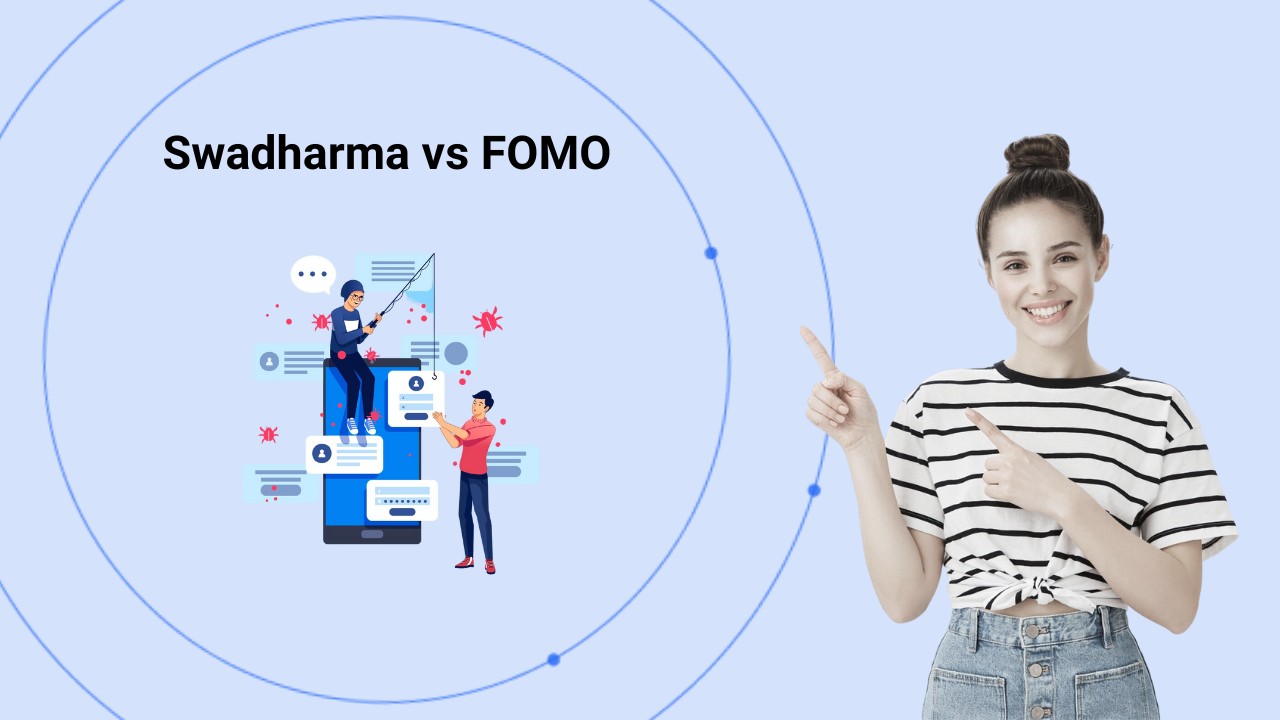Did you know investors can trade on India’s Nifty 50 index even when the NSE is closed? This is possible through GIFT Nifty, a futures contract that allows global investors to speculate on Nifty 50’s future performance. Previously called SGX Nifty, it was shifted to NSE IX in GIFT City, Gujarat, in 2023, strengthening India’s role in global financial markets. This blog will explore GIFT Nifty, its operation, and why it matters to traders and investors.
What is GIFT Nifty?
GIFT Nifty is a futures contract linked to the Nifty 50 index, which tracks the top 50 companies listed on the National Stock Exchange (NSE). It allows global investors to take positions on the future movement of the Nifty 50, providing early indicators of market sentiment before the Indian stock market opens.
GIFT Nifty Means: Understanding Its Transition from SGX Nifty
Global investors traded SGX Nifty on the Singapore Exchange (SGX) earlier. However, in July 2023, all Nifty futures trading was moved to NSE IX in GIFT City (Gujarat International Finance Tec-City) as part of India’s effort to centralise offshore trading of its equity derivatives. This transition was aimed at:
- Bringing offshore Indian derivatives trading under India’s regulatory framework
- Boosting India’s global financial standing
- Attracting foreign investment through a regulated Indian exchange
Since this shift, GIFT Nifty has become the primary platform for global investors to trade Nifty 50 futures.
How Does GIFT Nifty Work?
GIFT Nifty functions as a futures contract that allows investors to trade based on their expectations of Nifty 50’s future price movements. It operates on the NSE International Exchange (NSE IX) in GIFT City, a global financial hub designed to attract foreign investments in India.
Key Aspects of GIFT Nifty’s Functioning:
- Trading Mechanism – Investors buy or sell GIFT Nifty contracts, speculating on the future performance of Nifty 50, similar to how futures trading works in domestic markets.
- Extended Trading Hours – Unlike NSE India, which operates from 9:15 AM to 3:30 PM IST, GIFT Nifty runs for nearly 21 hours daily, ensuring global investors can trade across different time zones.
- Liquidity and Participation – Since it operates in an international financial hub, Indian and foreign institutional investors (FIIs) can access it, improving liquidity and allowing for a seamless trading experience.
- Market Sentiment Reflection – Because it trades before the NSE opens, GIFT Nifty is a pre-market indicator, giving traders insights into how the Indian stock market might perform during regular trading hours.
- Regulatory Framework – GIFT Nifty is regulated under India’s financial laws via NSE IX, ensuring compliance with Indian regulatory standards while offering international investor participation.
By combining global accessibility, pre-market insights, and a structured futures trading model, GIFT Nifty bridges the gap between Indian and international financial markets while providing investors with an effective hedging and trading instrument.
Why Do Investors Trade GIFT Nifty?
1. Pre-Market Indicator for NSE India
Since GIFT Nifty trades before the Indian stock market opens, its price movements often indicate how NSE India might perform at market opening. Traders use these movements to anticipate market trends.
2. Global Trading Access
Unlike NSE, which is only open during Indian market hours, GIFT Nifty provides nearly 21-hour trading, allowing investors from different time zones to trade Indian derivatives.
3. Risk Management and Hedging
Institutional investors use GIFT Nifty futures to hedge risk against potential losses in Indian equities. It acts as a risk management tool for portfolio balancing.
4. Arbitrage Opportunities
Traders leverage price differences between GIFT Nifty and NSE Nifty 50 to generate arbitrage profits by buying in one market and selling in another.
How is GIFT Nifty Calculated?
GIFT Nifty’s value is derived from the Nifty 50 index, incorporating factors such as:
- Global market trends that affect investor sentiment
- Live price movements of Nifty 50 stocks
- Futures contract expiration periods and interest rates
Since GIFT Nifty is a derivative, its price reflects expected future performance rather than real-time Nifty 50 values.
What are the Benefits of GIFT Nifty?
For Investors and Traders:
- Early Market Insights – Since GIFT Nifty trades before the NSE opens, it indicates market trends early.
- High Liquidity – The extended trading hours and participation of global investors lead to higher trading volumes.
- Risk Diversification – Institutional investors use GIFT Nifty to hedge their exposure to Indian markets.
For the Indian Financial Market:
- Boosts India’s Global Financial Presence – By shifting trading from SGX to GIFT City, India strengthens its role in global finance.
- Attracts Foreign Investment – International investors can trade Indian stocks without directly participating in NSE, increasing foreign capital inflows.
How Does GIFT Nifty Impact Market Sentiment and Trading Strategies?
1. Predicts Market Opening Trends
Since GIFT Nifty trades before the NSE opens, its movements often indicate how Indian markets will open, helping traders adjust strategies accordingly.
2. Guides Institutional Investments
FIIs (Foreign Institutional Investors) use GIFT Nifty trends to plan their positions in Indian equities, affecting overall market direction.
3. Helps in Portfolio Hedging
Institutional traders hedge against potential losses in Indian stocks by taking positions in GIFT Nifty futures.
GIFT Nifty: Bridging Indian and Global Markets
GIFT Nifty connects Indian and global investors, providing pre-market insights, risk management tools, and greater market access. The transition from SGX to GIFT City strengthens India’s position as an international financial hub, ensuring better regulation and capital inflows.At Streetgains, we provide well-researched insights into market trends, index movements, and trading strategies. Our data-driven approach helps traders navigate GIFT Nifty and other financial instruments with expert-backed strategies.
Disclaimer:
The content in this blog is intended for informational purposes only and does not constitute investment advice, stock recommendations, or trade calls by Streetgains. The securities and examples mentioned are purely for illustration and are not recommendatory.
Investments in the securities market are subject to market risks. Please read all related documents carefully before investing.
What is GIFT Nifty? What It Is, How It Works, and Why It Matters? FAQs:
GIFT Nifty operates as a futures contract linked to the Nifty 50 index, allowing investors to speculate on its future movements. Global market trends, NSE movements, corporate earnings, and economic policies influence its price. Since it trades for nearly 21 hours daily, international news events can impact its movement even when the NSE is closed.
GIFT Nifty offers extended trading hours, high liquidity, and access to global investors, making it a crucial link between Indian and international markets. It serves as a pre-market indicator for NSE and provides hedging opportunities for institutional investors. Based in GIFT City, it operates under India’s financial regulatory framework.
GIFT Nifty’s value is derived from the Nifty 50 index, adjusted for global market trends, interest rates, and futures contract pricing. It represents the market’s expectation of Nifty 50’s future performance rather than real-time price movements. Traders use it to anticipate NSE’s opening trends.
GIFT Nifty allows global investors to trade Indian markets beyond NSE’s hours, increasing international participation. For Indian traders, it provides pre-market insights, helping them plan trading strategies. It also enhances India’s financial credibility by attracting foreign capital through GIFT City.
GIFT Nifty is a leading indicator for Indian markets, helping traders gauge NSE’s opening direction. Institutional investors use it for portfolio hedging and risk management. It also creates arbitrage opportunities for traders exploiting price differences between GIFT Nifty and NSE.
Since GIFT Nifty trades before the NSE opens, its price movements often indicate market sentiment for the next trading session. However, domestic factors like corporate earnings, RBI policies, and macroeconomic data influence NSE’s performance. Traders should consider both GIFT Nifty trends and local market conditions.
At Streetgains, we provide well-researched insights into GIFT Nifty trends, Nifty 50 movements, and global market influences. Our data-driven research helps traders navigate market volatility, hedging strategies, and trading opportunities.
FAQs:
-
1. How to earn money daily from trading?
Earning money daily from trading involves strategies like day trading, where traders capitalise on small price movements within the same day. Success requires real-time market analysis, quick decision-making, and risk management.
-
2. How to earn money from equity trading?
To earn money from equity trading, you need to buy stocks at a lower price and sell them at a higher price. Success depends on researching companies, analysing stock trends, and using technical or fundamental analysis.
-
3. How to earn money from share trading in India?
In India, share trading offers profit potential through buying and selling stocks on exchanges like the NSE and BSE. To maximise returns, traders should use market research, tools like technical analysis, and risk management strategies.
-
4. How to make money from share trading in India?
Making money from share trading involves selecting the right stocks, timing the market, and implementing trading strategies like swing trading or day trading while staying informed about market trends.
-
5. How to transfer money from a trading account to a bank account?
To transfer money from your trading account to your bank, log into your trading platform, navigate to the funds section, and initiate a withdrawal request. The money will typically be credited to your linked bank account in 1 to 3 days.
-
6. How to withdraw money from a trading account?
You can withdraw funds by logging into your trading account, selecting the withdrawal option, and selecting the amount to transfer to your bank account. Ensure your bank account is linked and follow any steps your broker requires.
Subscribe to our Credits-Based Research System:
Pay only for successful research calls!












